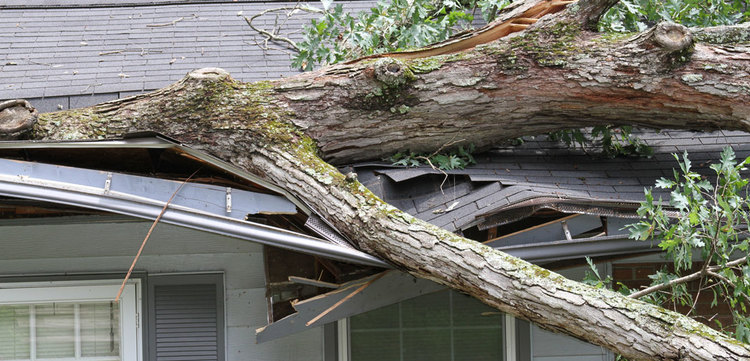
Trees can be tricky, but for the most part homeowners are responsible for what falls into their own yard. So if a storm causes your neighbor’s tree to fall in your yard, your homeowners insurance could help cover the cost of removing the tree and remedying the damage it caused on your property, after your deductible.
The same is true in reverse: If a tree on your property falls in your neighbor’s yard, your neighbor should contact his or her insurance company to determine what type of coverage is available for damage or cleanup in their yard.
In most cases, neighbors are able to work things out without too much trouble. Depending on the extent of the damage, you may need to file a homeowners insurance claim. Your homeowners insurance may or may not cover the cost of tree cleanup, depending on your policy and the company you work with.
Good news: Homeowners insurance from ERIE typically pays for the cost (subject to sub-limits) of removal of fallen trees if it’s due to a covered peril, such as a storm.
If there’s ever an issue between neighbors, you can rely on your claims adjuster to help straighten everything out.
THE CLAIMS PROCESS
If a tree falls on your house, the first thing to do, if it’s safe, is to try to prevent further damage to your home and property. Make sure to take some photos to document what happened. Then call your insurance agent, who can explain your options and help you understand if and how to file a claim. When you file a claim, a claims adjuster will come by to evaluate the damage and explain how your homeowners coverage comes into play. It’s recommended that you call your claims adjuster before you contract to have the tree removed.
Sometimes trees fall on cars. If it’s not safe or possible to remove the tree from the car yourself, you should call a professional to remove it. (Again, talk to your insurance agent and a claims adjuster first and take a few photos of the fallen tree on your car.) Depending on the damage and terms of your insurance coverage, the optional comprehensive coverage you may have under your auto policy could provide coverage for the loss.
PREVENTING TREE DAMAGE
Preventive measures matter when it comes to trees. Start by looking for signs of distress such as dead limbs, cracks in the trunk or major limbs, leaning to one side and branches that are close to a house or power line. Mushroom growth on the roots or bark can also signal trouble.
Homeowners should be concerned about the health of their trees. It’s possible for you to be held responsible for resulting damage to your neighbor’s house or property, if your tree falls due (in whole or part) to your own neglect. One of the best things to do is to regularly have large trees trimmed. (The Tree Care Industry Association lists accredited tree care professionals.)
This story was originally published by ERIE in 2014. It was updated in 2019 with additional information.

Discussion
There are no comments yet.